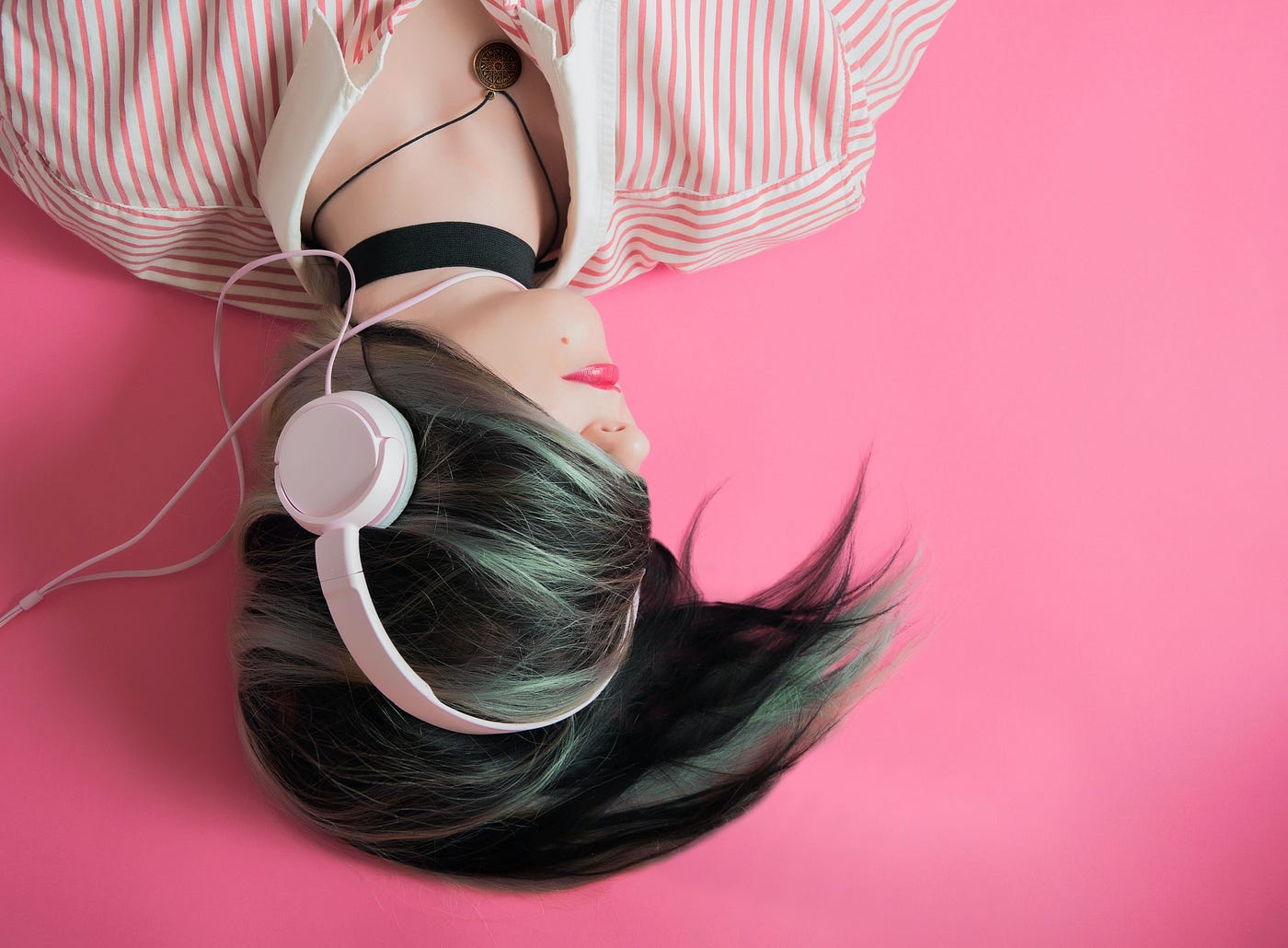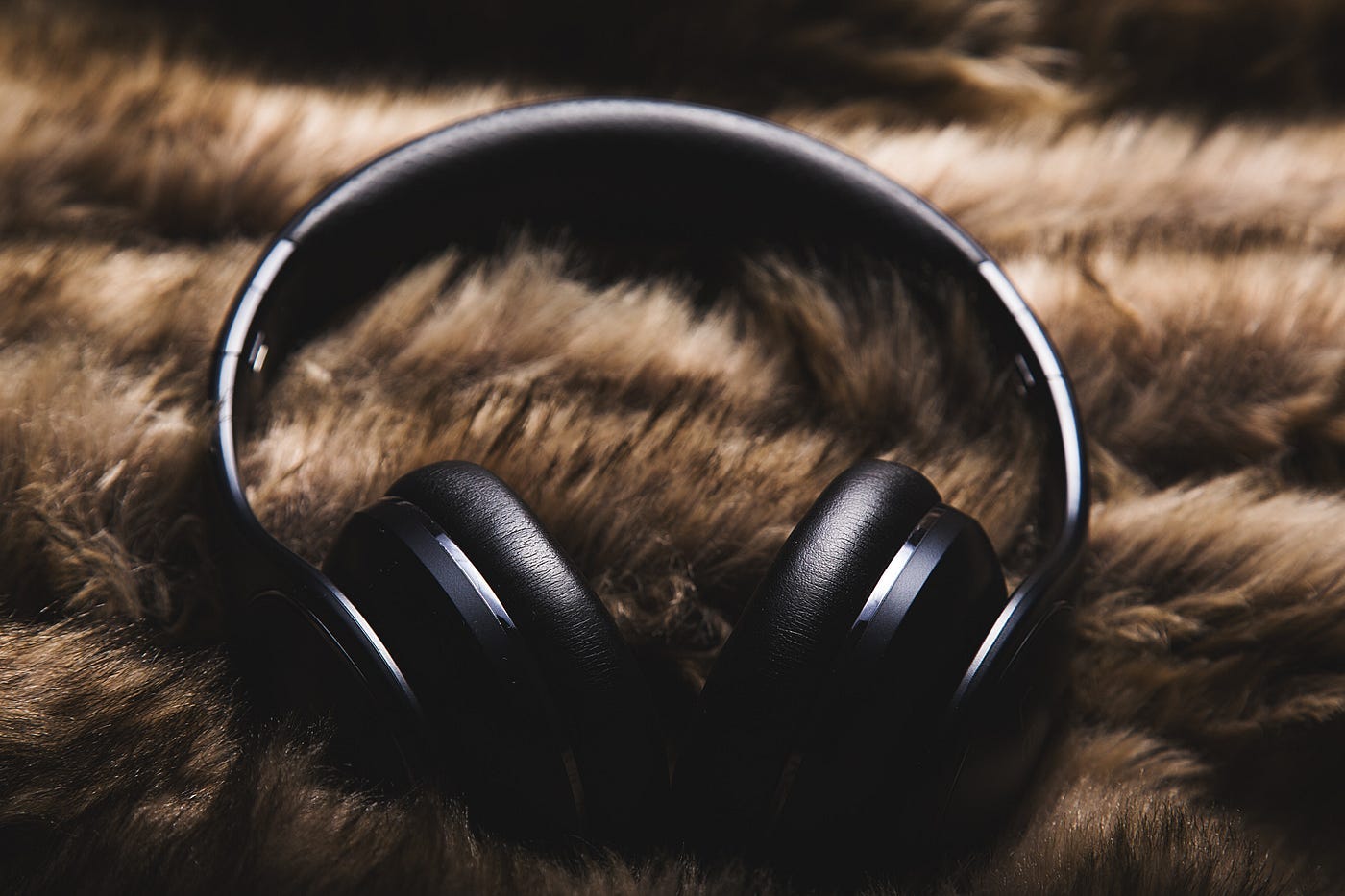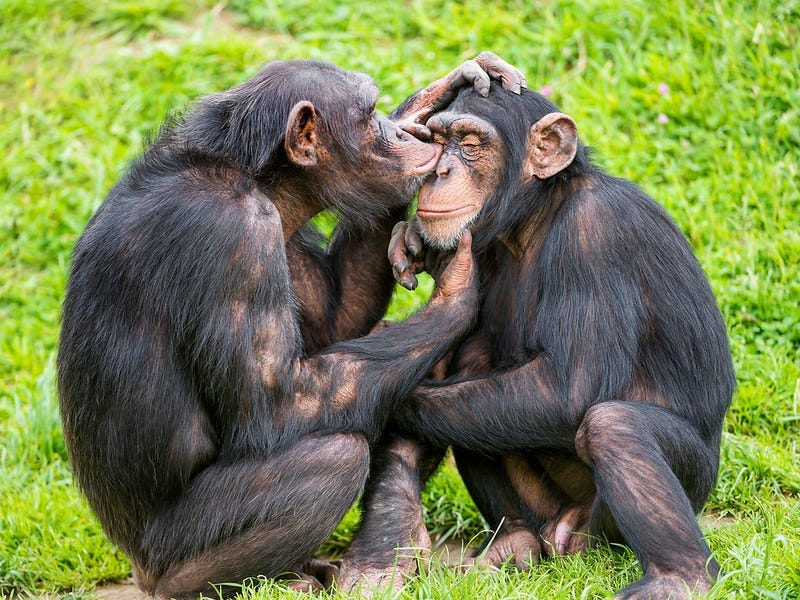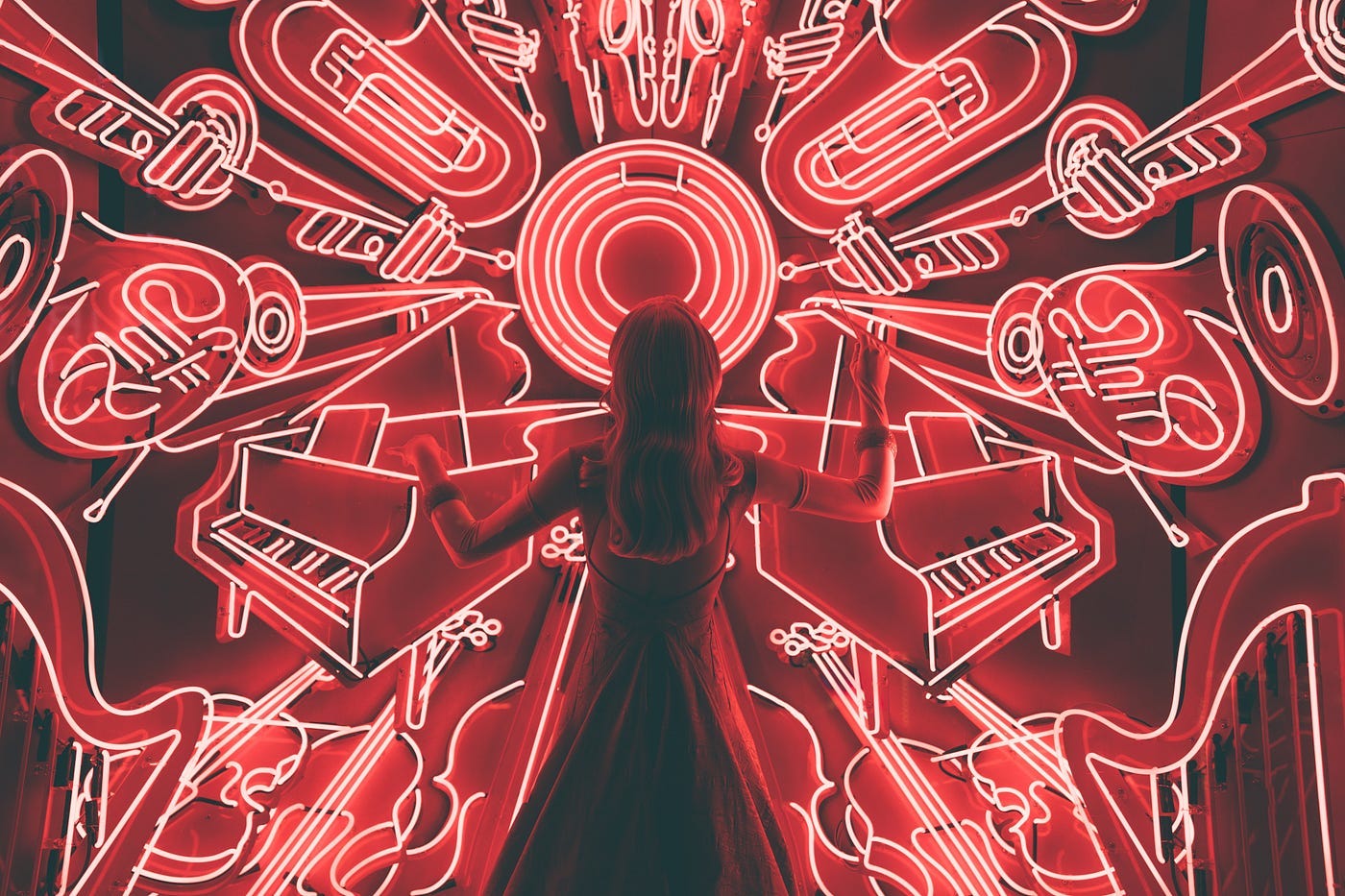Will ASMR be the first artform in which AI outperforms humans?
The tingles that birthed an intimate art form could let technology under our skin
First appeared in Medium. Lightly edited to avoid gross anachronisms.

Have I missed something? I’m trying to catch up on the state-of-the-ASMR art, and it’s a good thing I’m working from home. The biggest YouTubers in the ASMR world seem to have merged into a single ethereal nymph, all liquid eyeliner, cherry lips, and lacquered nails. And she seems intent on nibbling at my ear.
What is ASMR?
Autonomous Sensory Meridian Response — ASMR — gives a new name to an ancient phenomenon. Some people experience ecstatic tingling, often starting on the scalp, brought on by certain quiet sounds like the fizz of a freshly-poured beer, a hairbrush scraping through locks, or fingernails tapping on Formica. Internet discussions allowed those who get the sensations to find one another, but terms like ‘brain massage’ and ‘brain orgasm’ missed the mark. Hence ASMR, a clinical sounding name, coined for an Internet community.
Studies suggest that ASMR is real and has a physiological basis

That people experience a thrill at quiet, close-by sounds probably shouldn’t surprise anyone. In our most intimate moments of parenting, romance, and friendship, humans use quiet speech, whispering, and touch, to soothe, reassure, and calm. ASMR might even share sensory and psychological pathways with the thrilling ‘skin orgasms’ experienced by some music listeners. But that remains contentious.
The wheels of scientific progress turn far slower than the blistering trends of online video and audio streaming. The few attempts to study ASMR scientifically show that experiencing ASMR lowers heart rates, and temporarily eases depression and chronic pain. Not everybody gets the ASMR tingles. A comparison of those who do and do not tingle found some differences in patterns of connection between brain regions. It remains very early days, but studies suggest that ASMR is real and has a physiological basis.
Intimacy, distilled
ASMRtists, the practitioners of our 21st Century’s first new artform, are the auditory equivalent of 20th Century art’s abstract expressionists. They mine the newly-discovered motherlode of ASMR ‘triggers’, and present them in ever more artful ways. Their impact might eventually extend beyond that of Mark Rothko, Helen Frankenthaler, and Jackson Pollock.
The most successful ASMRtists post their work on YouTube, Twitch, and Spotify. More than 8.6 million YouTube subscribers regularly watch — and listen to — SAS-ASMR eating a variety of interesting foods. More than 43 million viewers have heard her chew on a sticky honeycomb for 12 minutes. With over 2.4 million subscribers, 22-year-old Taylor Darling, a.k.a. ‘ASMR Darling’ has whispered, scratched, and tapped into binaural microphones since 2016.
ASMRtists are the auditory equivalent of the abstract expressionists.
According to one of the early scientific studies, AMSR triggers are “often social, almost intimate, in nature”. Indeed, intimacy crops up often in descriptions of ASMR, providing a clue to the power of the sensations it evokes. These sounds define our close social worlds and the interactions humans use to bond ourselves with our very closest friends and family.
Conversation evolved from grooming behaviors, much like those of the great apes. Our ancestors formed alliances and networks of obligation while tending to one another’s skin and hair, mumbling sweet nothings, and eating together. Evolving the capacity to speak and understand one another’s words only added to our intimate repertoire.

Much of the ASMR world extends beyond interpersonal closeness, into a deeper, more erotic intimacy. Which brings me back to the ethereal nymphs nibbling on my ears.
Many of the most viewed ASMRtists, like FrivolousFox, Pelagea ASMR, and ASMR Cherry Crush, have converged on styles that burgeon with ‘mouth sounds’, including kissing, nibbling, and sucking on their binaural microphones. Accompanying visuals include close-up lips, doe eyes, and gentle stroking hand movements.
This sub-genre undeniably draws some of its power from its erotic potential, amplified by a languid, unhurried delivery. That erotic potential results in unwelcome attention of the kind the Internet seems so reliable at delivering. Cherry Crush emphasizes on her YouTube channel that her ASMR “is NOT for fetishization or sexualization purposes”. Yet it doesn’t take an overactive imagination to see why such a disclaimer might become worth posting.
There is so much more to ASMR, and ASMR intimacy, than this particular form of eroticism. Ephemeral Rift’s dark experimental triggers and Goodnight Moon’s quirky storytelling depart from the heavily gendered whispering intimacy that seems to dominate the art form right now.
Aural porn
The success of obliquely sensual mouth sounding and ear-nibbling ASMRtists has caught the attention of pornographers. Adept at monetizing almost any erotic outlet, they are throwing their resources and best talent at ASMR. They repurpose explicit videos, remixing the soundtracks, to deliver both the ASMR tingles and the other kind. Angela White filmed new sex scenes for the genre. A naked Rockey Emerson sits topless in another video, eating a packet of macarons.
Despite the protests of many rusted-on ASMR fans, regular and X-rated ASMR seem almost indistinguishable to many listeners. Soundtracks play an enormous part in pornographic films, from the sounds of bodies coming together to the exaggerated gasps, sighs, and “Oh my God!” expressions of the performers. New artists like Brasileira Maru Karv emerge daily to fill the gap, starring in explicit solo videos that prioritize ASMR triggers over the sexual acts themselves.
Fertile ground for machine learning
While ASMRtists start to feel the sharp elbows of Big Porn, a bigger challenge to their artform might come from another direction. Artificial Intelligence, and especially machine learning, seems perfectly suited to exploring and creating ASMR. In so doing, it could make tingle-generation a largely computer-driven pursuit.
Chances are that ASMRtists and hobbyists have only mined the surface deposits of ASMR triggers
In recent years, music made with the help of artificial intelligence leaped from futuristic prediction to audible reality. Projects like Google’s Magenta and OpenAI’s MuseNet lead the public charge toward AI-based musical creation. For now, ML algorithms learn from the vast body of music already created by human composers and musicians. They discover patterns in the music and learn to predict chords and notes that might follow others, sometimes stumbling into never-before-heard melodies.
ASMRtists and hobbyists have probably only mined the surface deposits of ASMR triggers. Their finds, recorded and published on the Internet, suit machine learning. The structures of ASMR tracks are simpler than music, and listener responses lend themselves easily to measurement. At the Tingle Science website, users can log their responses to ASMR videos by holding down a button while the feeling lasts. It should not prove difficult to track heart rate or skin conductance via existing smartwatches, generating mountains of data. Any such measures provide excellent data for machine learning.
There exists no reason for AI-generated ASMR triggers to remain constrained to the world of natural sounds. From data on existing sounds, algorithms should be able to predict — and try out — new sounds that elicit ASMR even more effectively. From those sounds, and people’s responses to those sounds, machine learning ASMR could walk step-by-step into the terra incognita of sounds never before heard by human ears, dramatically expanding ASMR repertoires.
That will likely lead to super-normal stimuli, entirely new sounds that evoke responses stronger and more reliable than present-day ASMR. Endowed with such capacities to hack into our intimacy pathways, platforms that get the Machine Learning of ASMR right will almost certainly exert a far more effective hold on human attention spans than our existing technologies do today, keeping us listening and engaging by feeding us the tingles.




